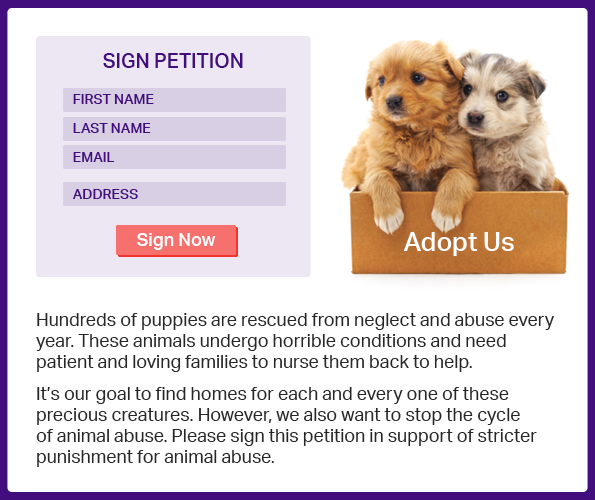You’re already familiar with classic marketing strategies for your nonprofit organization, like fundraising letters, sponsorship requests, events, and more. Now, you’re looking for new ways to refine your processes, perfect your outreach, and get even more out of every conversation you have with a supporter.
Marketing automation for nonprofits is one way to take your marketing, fundraising, and communications strategies to the next level. When used well, it can help busy staff get more time back in their day while still persuading more supporters to donate, take action, and speak up on behalf of the mission that’s important to you both.
In this blog, we’ll share four reasons why marketing automation benefits nonprofits and offer tips to make the most of it. To learn even more about how marketing automation and the ways it can help nonprofits stay on top of a changing fundraising landscape, meet campaign goals, and give supporters experiences that get results, download the complete guide to the future of fundraising.
 These actions where supporters convert on a form lead them to develop a relationship with your organization. Each action they take updates their profile in your CRM so you can see at a glance whenever you’ve interacted with them. Seeing their full history with you is critical for any attempts you’re making to encourage them to expand or upgrade their generosity in some way (for example, by converting a volunteer into a first-time donor, a grassroots donor into an advocate, an advocate into a sustaining donor, or a mid-level donor into a major donor).
Stay in regular contact and remember to avoid making every email a fundraising email — if donors know you’re asking for money every time, they’re more likely to delete your emails without reading them, or worse, unsubscribe. Send them stewardship messages like program updates, event invitations, newsletters, and surveys.
These actions where supporters convert on a form lead them to develop a relationship with your organization. Each action they take updates their profile in your CRM so you can see at a glance whenever you’ve interacted with them. Seeing their full history with you is critical for any attempts you’re making to encourage them to expand or upgrade their generosity in some way (for example, by converting a volunteer into a first-time donor, a grassroots donor into an advocate, an advocate into a sustaining donor, or a mid-level donor into a major donor).
Stay in regular contact and remember to avoid making every email a fundraising email — if donors know you’re asking for money every time, they’re more likely to delete your emails without reading them, or worse, unsubscribe. Send them stewardship messages like program updates, event invitations, newsletters, and surveys.
1. Marketing automation helps nonprofits be proactive.
One of the first steps to success with marketing automation is making sure you already feel comfortable and confident in your ability to target specific audiences with your marketing materials. When your nonprofit software gives you the ability to segment donors based on shared characteristics, you can draft marketing materials that focus on different audiences. Then, you can use your software to schedule those materials to be automatically sent out to those segments at optimal times. With an effective marketing automation tool, before your marketing campaign even begins your nonprofit can:- Create static or dynamic lists of supporters based on activity type, demographic markers, network connections, and more.
- Draft and save email templates for each list.
- Personalize each message by automatically populating each supporter’s name, recent activity details, recent gift details, and more throughout your message.
- Set emails to be sent at specific times for better open and clickthrough rates.
- Make a plan to report on your results at regular intervals.
2. Nonprofits can create more effective email series with marketing automation tools.
Email series encourage supporters to complete specific steps. Automatically triggering these emails in response to particular actions smoothly moves supporters along their (often nonlinear) journey while saving your team time. For example, a supporter might sign a petition or subscribe to an email newsletter. This action could trigger a welcome email series, which educates this new contact about your work and encourages them to take a second action with you or make their first gift. Make sure you’re engaging them with email stewardship content that’s relevant and interesting to them based on their recent activity with you. Here are a few tips to keep in mind:- Focus on persuasion. New supporters may start off unfamiliar with your cause, and your email should provide them with some initial educational resources they need to learn more and get invested in your mission.
- Emphasize your call-to-action. The action you want your supporters to complete should be incredibly clear. Try including a button with on-brand colors that pop to grab attention. Use direct language to tell the supporter exactly what you want them to do, such as “Donate now!” or “Give today!”
- Measure success rates. You can measure your mailing strategy’s success by looking at metrics such as your email open and click-through rates.
3. Marketing automation for nonprofits helps streamline the flow of information.
Marketing automation has two parts: automating the outgoing content for supporters and automating the incoming information for your CRM. The information you collect from supporters through your digital forms should enter your database without any additional work from your staff, since this reduces opportunities for human error and saves time. In order to collect information, nonprofits create and use forms for when a supporter:- Signs up for your nonprofit’s email subscription list.
- Signs an online petition.
- Enters their email for a downloadable resource.
- Participates in a targeted action for an advocacy campaign.
- Signs up for a volunteer shift.
 These actions where supporters convert on a form lead them to develop a relationship with your organization. Each action they take updates their profile in your CRM so you can see at a glance whenever you’ve interacted with them. Seeing their full history with you is critical for any attempts you’re making to encourage them to expand or upgrade their generosity in some way (for example, by converting a volunteer into a first-time donor, a grassroots donor into an advocate, an advocate into a sustaining donor, or a mid-level donor into a major donor).
Stay in regular contact and remember to avoid making every email a fundraising email — if donors know you’re asking for money every time, they’re more likely to delete your emails without reading them, or worse, unsubscribe. Send them stewardship messages like program updates, event invitations, newsletters, and surveys.
These actions where supporters convert on a form lead them to develop a relationship with your organization. Each action they take updates their profile in your CRM so you can see at a glance whenever you’ve interacted with them. Seeing their full history with you is critical for any attempts you’re making to encourage them to expand or upgrade their generosity in some way (for example, by converting a volunteer into a first-time donor, a grassroots donor into an advocate, an advocate into a sustaining donor, or a mid-level donor into a major donor).
Stay in regular contact and remember to avoid making every email a fundraising email — if donors know you’re asking for money every time, they’re more likely to delete your emails without reading them, or worse, unsubscribe. Send them stewardship messages like program updates, event invitations, newsletters, and surveys.
4. Social media marketing automation for nonprofits helps build stronger relationships.
You’re likely active on social media platforms where your supporters are active. This could be for a range of reasons or SMART goals — raising funds, generating advocacy action, and reaching volunteers are just a few. It’s important to keep track of which supporters are active in engaging with your posts — especially resharing them, since that’s an especially strong indication of support for your work and helps you grow your community. Your supporter engagement platform should help you track this information in their unified profiles. This will help you use marketing automation to send them more messages about topics they’ve shown you they care about enough to like and re-share on social media networks.Get started with marketing automation
Marketing automation for nonprofits can boost the efforts of an already effective marketing strategy. Your nonprofit can plan ahead by segmenting and maintaining donor lists, personalizing supporter communications, scheduling sends, and creating triggered series so supporters receive timely follow-ups when they take specific actions. Automating these tasks helps you appeal to more supporters in a more personalized way, which gives them a better experience while also giving staff more time for other mission-related work. As your supporter audiences evolve, so will the work your team does to engage them. To learn more about how to fundraise efficiently with the right technology, download the complete guide to the future of fundraising.
Ready to Get Started?




